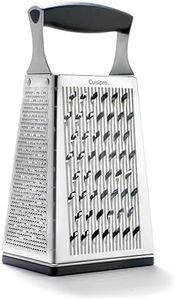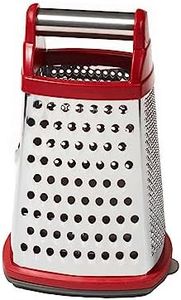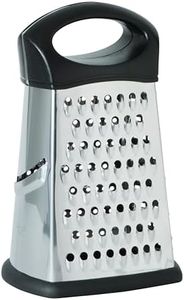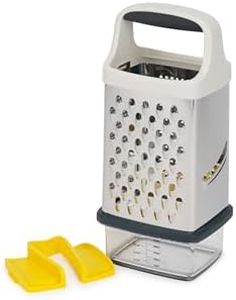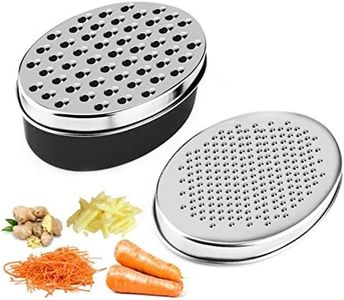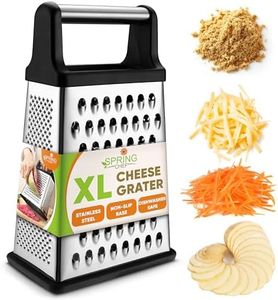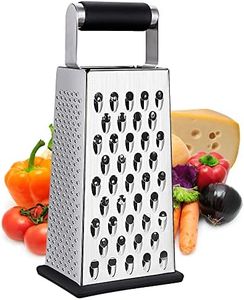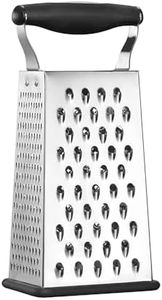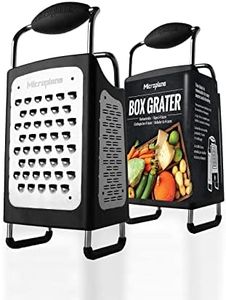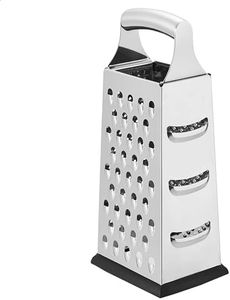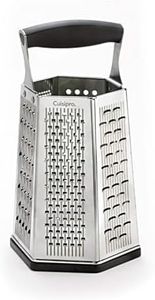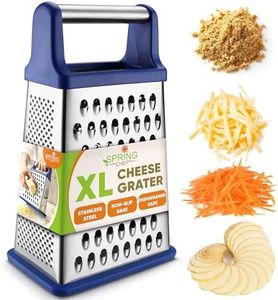We Use CookiesWe use cookies to enhance the security, performance,
functionality and for analytical and promotional activities. By continuing to browse this site you
are agreeing to our privacy policy
10 Best Box Graters
From leading brands and best sellers available on the web.Buying Guide for the Best Box Graters
When you're shopping for a box grater, it's important to think about how you'll be using it in your kitchen. A box grater is a handy tool for grating cheese, vegetables, zesting fruits, and sometimes even slicing. Not all box graters are created equal, so understanding the most important features will help you pick one that lasts long, feels comfortable, and makes prep easy and safe. Let your cooking habits guide you in prioritizing certain characteristics and always consider how you plan to clean and store the grater.MaterialThe material of a box grater usually determines its durability, weight, and how easy it is to clean. Most common options are stainless steel, plastic, or a combination. Stainless steel is rust-resistant, maintains sharpness longer, and handles different foods well, which makes it ideal if you use your grater regularly or for hard foods. Plastics can be lighter, but may not last as long or handle tough grating jobs. If you cook often or want a reliable long-term tool, stainless steel is generally better, but if you only grate occasionally and want something lightweight, plastic may suffice.
Grip and Handle DesignThe grip and handle of a box grater affect comfort and safety during use. A well-designed handle offers stability, especially if you're pressing down hard or grating large amounts. Handles can be padded, rubberized, or plain metal; padded or rubberized ones are easier on the hands and less likely to slip. If you have limited grip strength, grip comfort becomes even more important. Test how the handle feels in your hand or check for ergonomic designs if you plan to use your grater frequently or for prolonged periods.
Grating SurfacesBox graters typically have four sides, each offering a different cut: coarse, medium, fine, and sometimes slicing. The variety lets you tackle multiple tasks with one tool, from shredding cheese to zesting citrus or slicing cucumbers. If you only use a grater for cheese, fewer options may be fine, but if you like prepping lots of different ingredients, more surfaces offer more flexibility. Think about the recipes you cook often to decide how many and what types of grating slots are essential.
Stability/Base DesignA stable box grater makes grating safer and more efficient. Features like a wide base, non-slip feet, or rubberized bottoms can prevent the grater from sliding around. If you often grate over bowls or need one-handed operation, a grater with a sturdy, non-slip base can make your work easier and safer. Stability is especially important if grating harder foods or if you want to let kids help in the kitchen.
Size and StorageBox graters come in different sizes, from compact models to large, family-style ones. A larger grater handles more food at once but takes more storage space; a smaller grater is easier to store but may require more effort for big jobs. If you have limited kitchen space, measure the spot where you'll keep it or look for stackable or collapsible options. If you usually cook for several people or batch cook, a larger size speeds up prep.
Ease of CleaningCleaning a box grater can sometimes be tricky because food can get stuck in the holes. Some graters are dishwasher safe, which makes cleanup easier, while others require hand washing. Smooth finishes and fewer seams help prevent gunk from building up. If you want to minimize cleaning time, check if the grater is dishwasher-safe and has a design that lets you easily reach every side.

